 Joe was able to make the West practice Tuesday afternoon for the East-West Shrine Game, which will be held at the Fruitdome at 4 p.m. Saturday, televised on NFL Network with a radio broadcast on WDAE-AM 620. Again, Joe focused his attention on defensive backs. Today, Illinois cornerback Terry Hawthorne, head and shoulders, had the best practice.
Joe was able to make the West practice Tuesday afternoon for the East-West Shrine Game, which will be held at the Fruitdome at 4 p.m. Saturday, televised on NFL Network with a radio broadcast on WDAE-AM 620. Again, Joe focused his attention on defensive backs. Today, Illinois cornerback Terry Hawthorne, head and shoulders, had the best practice.
Zeke Motta, safety, Notre Dame, 6-3, 215: Quick feet. Smooth runner. Quick ball reaction.
Thomas Shamarko, safety, Syracuse, 5-10, 208: Small, yet quick. Later, Middle Tennessee State wide receiver Anthony Amos caught a crossing pattern from the left side right in front of Thomas but paid the price as Thomas hammered him to the ground.
Terry Hawthorne, CB, Illinois, 6-1, 193: Has a nose for the ball. Smooth. Good ball reaction. Good contact with a wide receiver off the snap. Very physical. After putting the wide receiver on the ground, hung with him like a second skin and when a low pass was throw to said receiver, Hawthorne leaped over the receiver and batted the ball down, nearly having a spectacular pick. So far that has been the play of the week. Later, Hawthorne never let his wide receiver get past him, always using physical play to keep in front if not disrupt the receiver’s route. On another play, Hawthorne had blanket coverage on Arizona receiver Dan Buckner down the right sideline. Good job of both coverage, and being physical with Buckner thereby rendering his route useless. Later, stood Buckner up at the line at the snap which completely blew up Buckner’s timing as he was unable to recover.
Bradley McGougald, safety, Kansas, 6-1, 210: Got spun around badly by Iowa’s Keenan Davis down the left sideline. A scout could be heard aloud saying, “That’s not fair putting a safety one-on-one against a wide receiver.”
Khalid Wooten, CB, Nevada, 5-11, 200: Blanket coverage on Mount Union receiver Jasper Collins down the left sideline. Later, despite giving up five inches to Tyrone Goard of Eastern Kentucky, was so physical with Goard through the entire route Goard couldn’t shake him.
Sheldon Price, CB, UCLA, 6-2, 180: Made Buckner’s life miserable trying to get off the line of scrimmage. Later, Jasper Collins of Mount Union had him beat on a curl route to the right side but Collins couldn’t come up with the ball. Mississippi State receiver Chad Bumphis made a spectacular play on Price that was pretty much impossible to defend. Bumphis, while cutting to the right sideline in front of Price, made a one-handed grab with his left hand just as he was going out of bounds. In short, Price was getting picked on all practice.
Cody Davis, safety, Texas Tech, 6-2, 2-5: Good coverage but failed to react to a tipped ball. It was as if he never saw the ball tipped.
Nigel Malone, CB, Kansas State, 5-10, 180: Physical coverage against Davis all the way down the right sideline. Later, he read a pass to Goard perfectly cutting in front of Goard at just the right moment but was unable to come up with the interception.
Keelan Johnson, safety, Arizona State, 6-1, 207: Covered Davis like a thick coat of SPF 45 sunscreen.
Duke Williams, safety, Nevada, 6-0, 200: Good break up of a short pass into the left flat. He turned chicken salad out of chicken s(p)it later when he was totally roasted down the left sideline but made a beautiful recovery and leveled the receiver just as he got his hands on the pass to break up the play. It was the hit of the afternoon from what Joe saw.
Jahleel Addae, safety, Central Michigan, 5-11, 200: Really good range and strong ball reaction.
Demontre Hurst, CB, Oklahoma, 5-10, 183: Physical at the line of scrimmage.
Aaron Hester, CB, UCLA 6-2, 195: Mixed reviews. Was beaten terribly under lousy coverage but the receiver dropped the ball. On the very next play on a short pass, Hester nearly broke the receiver in half after reading and reacting well on the play.
Keith Pough, LB, Howard, 6-3, 238: Quarterback tried to fool him with a short pass to the left but Pough read the play perfectly and nearly swallowed the receiver whole for the tackle.
Nick Kasa, TE, Colorado: 6-6, 265: Able to get past the second level over the middle almost every catch.
Christine Michael, RB, Texas A&M, 5-11, 220: Showed serious speed when he got loose and ran around the left end.
Travis Howard, CB, The Ohio State, 6-1, 200: Blanket coverage on Amos down the left sideline and nearly had a pick.






 Bucs icon Derrick Brooks is not surprised the Bucs have taken a “no-hurry” approach to extending Josh Freeman’s contract, which expires after the 2013 season.
Bucs icon Derrick Brooks is not surprised the Bucs have taken a “no-hurry” approach to extending Josh Freeman’s contract, which expires after the 2013 season.
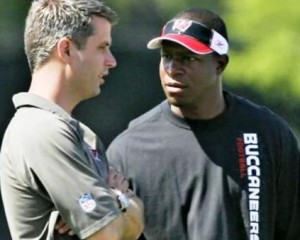
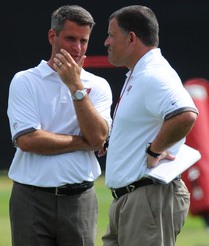 This is an intriguing development.
This is an intriguing development.

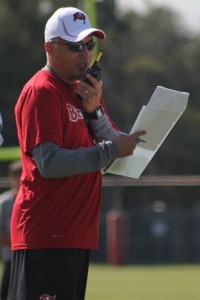

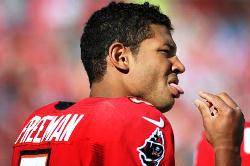

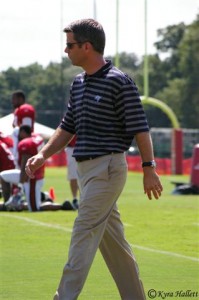
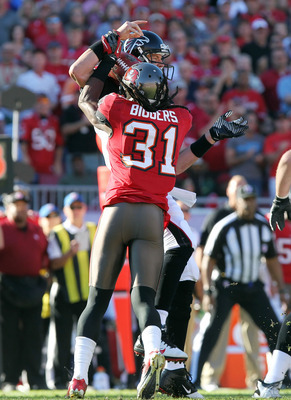
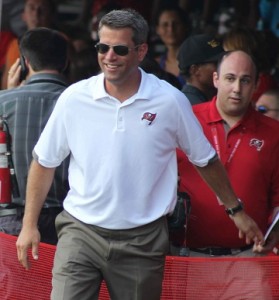

 In what was considered the deepest draft in the modern era, the Bucs traded up, dumping a fifth-round pick on Day 2 of the 2010 NFL Draft to snag Arrelious Benn with the 39th overall selection.
In what was considered the deepest draft in the modern era, the Bucs traded up, dumping a fifth-round pick on Day 2 of the 2010 NFL Draft to snag Arrelious Benn with the 39th overall selection.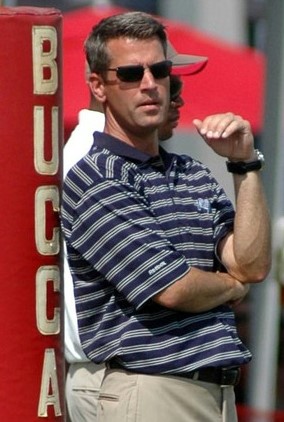 NFL fans watching the amazing playoff games this weekend repeatedly saw Bucs rockstar general manager Mark Dominik and Bears cornerback Charles Tillman on TV in USAA commercials honoring them as the two finalists for an award that recognizes those in the NFL who have shown outstanding dedication to the military community.
NFL fans watching the amazing playoff games this weekend repeatedly saw Bucs rockstar general manager Mark Dominik and Bears cornerback Charles Tillman on TV in USAA commercials honoring them as the two finalists for an award that recognizes those in the NFL who have shown outstanding dedication to the military community.

